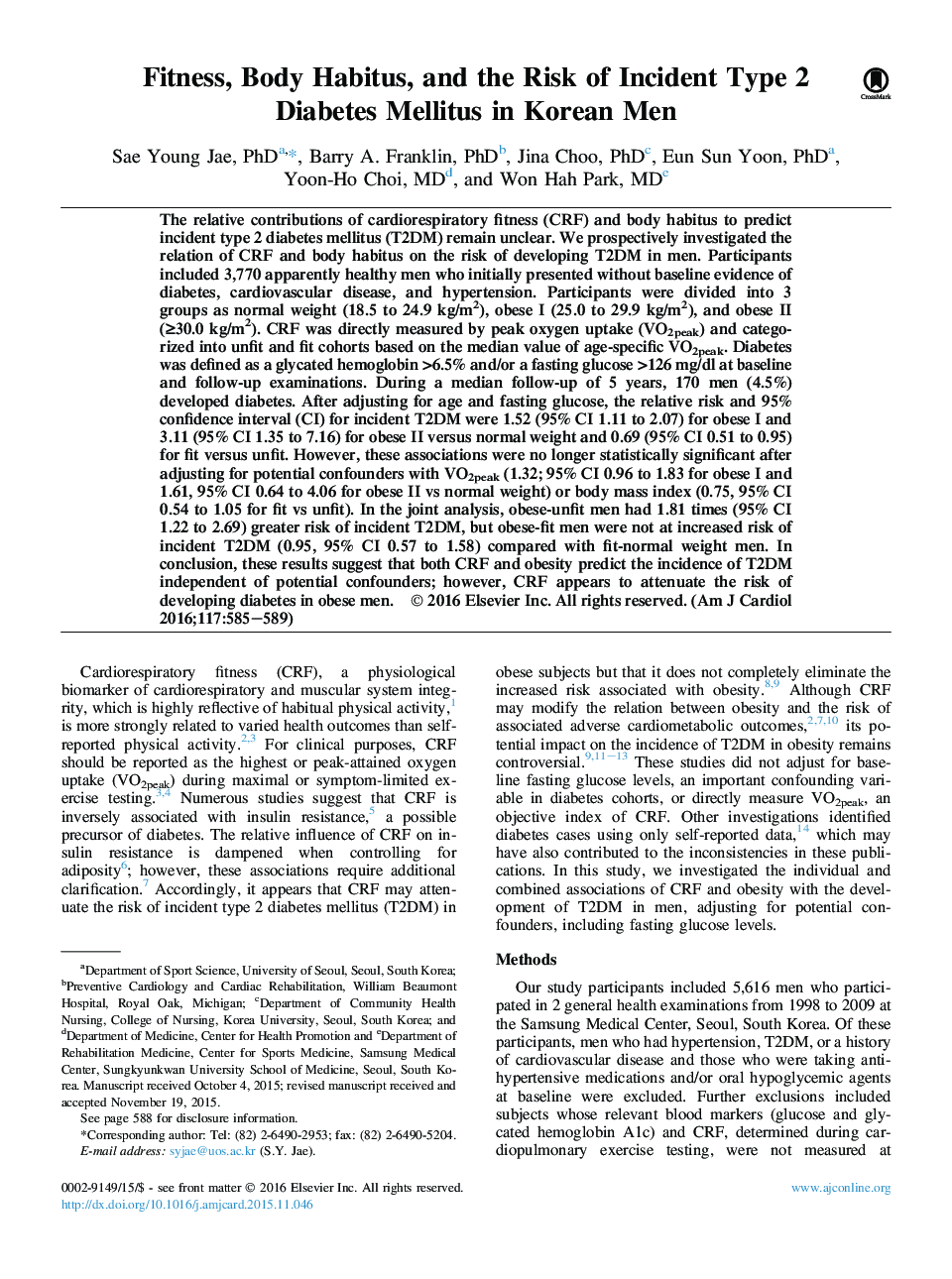| کد مقاله | کد نشریه | سال انتشار | مقاله انگلیسی | نسخه تمام متن |
|---|---|---|---|---|
| 5930071 | 1572119 | 2016 | 5 صفحه PDF | دانلود رایگان |
The relative contributions of cardiorespiratory fitness (CRF) and body habitus to predict incident type 2 diabetes mellitus (T2DM) remain unclear. We prospectively investigated the relation of CRF and body habitus on the risk of developing T2DM in men. Participants included 3,770 apparently healthy men who initially presented without baseline evidence of diabetes, cardiovascular disease, and hypertension. Participants were divided into 3 groups as normal weight (18.5 to 24.9 kg/m2), obese I (25.0 to 29.9 kg/m2), and obese II (â¥30.0 kg/m2). CRF was directly measured by peak oxygen uptake (VO2peak) and categorized into unfit and fit cohorts based on the median value of age-specific VO2peak. Diabetes was defined as a glycated hemoglobin >6.5% and/or a fasting glucose >126 mg/dl at baseline and follow-up examinations. During a median follow-up of 5 years, 170 men (4.5%) developed diabetes. After adjusting for age and fasting glucose, the relative risk and 95% confidence interval (CI) for incident T2DM were 1.52 (95% CI 1.11 to 2.07) for obese I and 3.11 (95% CI 1.35 to 7.16) for obese II versus normal weight and 0.69 (95% CI 0.51 to 0.95) for fit versus unfit. However, these associations were no longer statistically significant after adjusting for potential confounders with VO2peak (1.32; 95% CI 0.96 to 1.83 for obese I and 1.61, 95% CI 0.64 to 4.06 for obese II vs normal weight) or body mass index (0.75, 95% CI 0.54 to 1.05 for fit vs unfit). In the joint analysis, obese-unfit men had 1.81 times (95% CI 1.22 to 2.69) greater risk of incident T2DM, but obese-fit men were not at increased risk of incident T2DM (0.95, 95% CI 0.57 to 1.58) compared with fit-normal weight men. In conclusion, these results suggest that both CRF and obesity predict the incidence of T2DM independent of potential confounders; however, CRF appears to attenuate the risk of developing diabetes in obese men.
Journal: The American Journal of Cardiology - Volume 117, Issue 4, 15 February 2016, Pages 585-589
